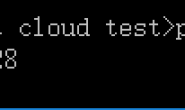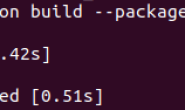本代码演示了python如何接受命令行参数
##Chris Hall 9/13/11
def main(argv):
sys.path.append('models')
#Usage will display when the user asks for help (-h) or when something
#invalid is entered. The letters used (-c, -n etc) were what I needed for
#my project and can be any designator
usage = """
Usage:
main [-h] [-c] [-l] [-m] [-i]
-h help
-c command line processing
-n no labels put on the screen
-l file location 1
-m file location 2
-i file location 3
"""
#Set up variables that will be used to store the arguments receive from
#command line
file1,file2,file3 = None,[],None
modellist = []
commandline = False
#Get the options and arguments from the command line. getopt takes in what
#is to be read (argv) and then the short names
#along with the long names that cane be passed. The letters with the ":"
#after them designate a required argument entry.
try:
opts, args = getopt.getopt(argv,"hcnl:m:i:",["help","command","labels",
"file1","file2","file3"])
#If an error occurs spit out the proper usage and quit
except getopt.GetoptError:
print usage
sys.exit(0)
#Processing of arguments, "o" being the option which relates to our letters
#above, and "a" being what was entered by the user
for o, a in opts:
if o in ("-h", "--help"):
print(usage)
sys.exit(0)
elif o in ("-c", "--command"):
commandline = True
elif o in ("-n", "--labels"):
labels = False
elif o in ("-l", "--file1"):
file1 = a
elif o in ("-m", "--file2"):
modellist.append(a)
elif o in ("-i", "--file3"):
file3 = a
#Determine assignment of the 3 required fields if no options provided and
#parameters are still passed
if args:
for arg in args:
if arg.endswith(".xml"):
file1 = arg
if arg.endswith(".py"):
modellist.append(arg)
if arg.endswith(".txt"):
file3 = arg




